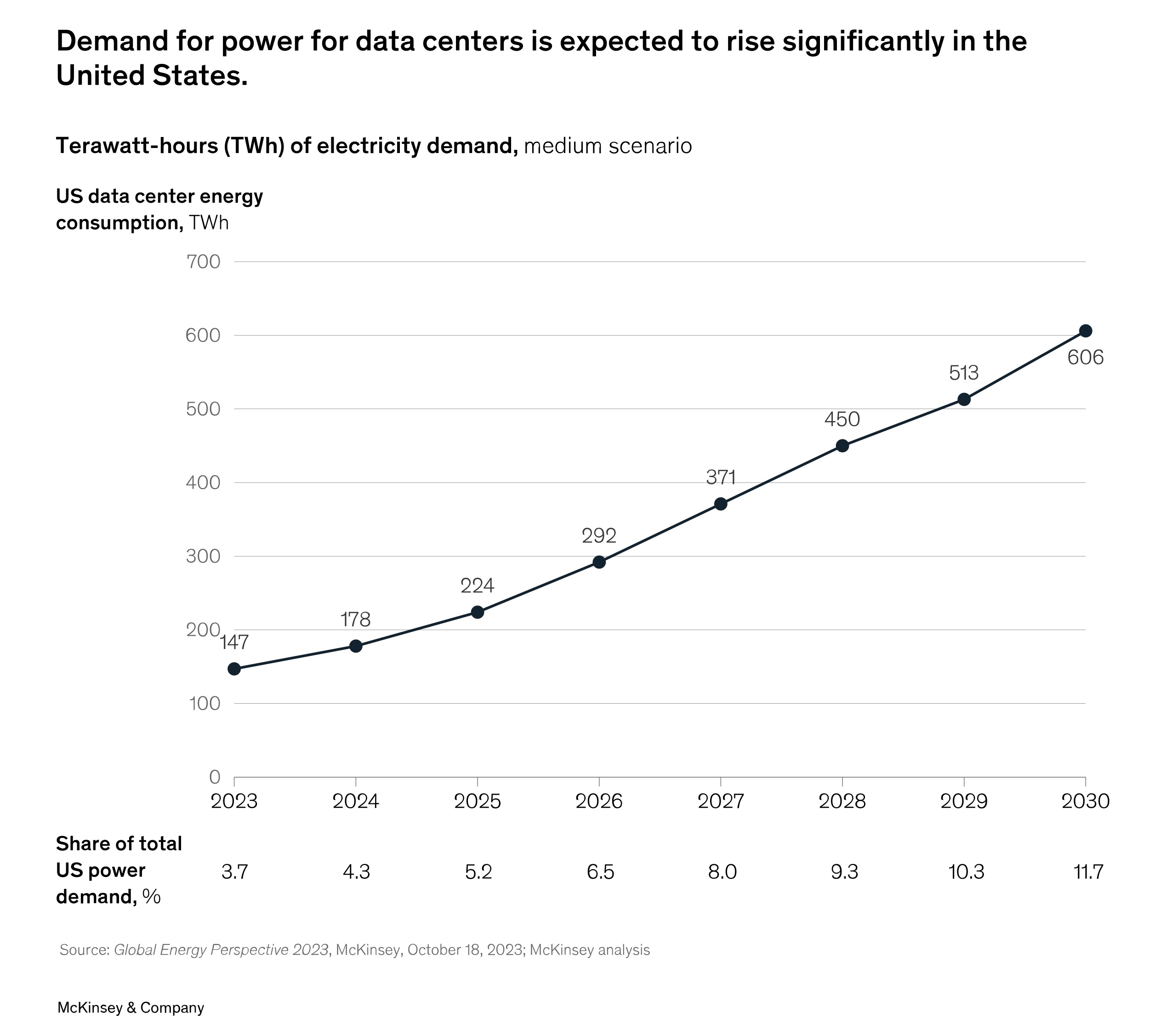Response to Deepseek News

The demand for AI-ready data centers is only going to continue at a 20-25% annual growth rate. Last week’s revelations about Deepseek’s advances stirred up the industry, but the main takeaway here is clear: applications for AI are expanding even faster than previously predicted (1). Open source models will accelerate innovation and fuel a wave of new applications, from wildfire emergency planning to diagnosing disease.
These new applications will drive tremendous investment into the infrastructure needed for such powerful computing, and that means more data centers, powered by new sources of electricity. In a September 2024 report, the management consulting firm McKinsey & Co. predicted that U.S. demand for data center power will triple by 2030 — growing from 3-4% of total U.S. electricity use today to 11-12% by the end of this decade (see chart, 2). And that’s based on current trends, which we imagine may well defy current forecasts.
I’ve watched this transformation in the telecommunications industry over the past several decades. Traditional data service providers like AT&T and Verizon once catered to individuals, but today the primary consumers of gigabits are data centers themselves, many managed by the likes of Google, Meta, and Microsoft. Technologies to support data center growth have dramatically increased our information capacity at an ever-decreasing cost per bit. As a result, the uses for data have proliferated.
The question, however, is to what degree the story line of data’s meteoric growth applies to the challenge of supplying energy to data centers. As we build more data centers to feed the ravenous appetite for AI-powered applications and other uses, our decisions about electricity supply will dramatically influence the energy landscape of the future.
“Meeting this demand will require considerably more electricity than is currently produced in the United States,” writes McKinsey in its report.
As data centers consider where to buy their electricity — or whether to build their own power generation — the key challenge will be to align growing demand with innovations to support low-cost, low-carbon and abundant energy. We’re excited to see how advancements in storage, geothermal, wind, solar and other technologies can change the economics of electricity markets, but we also need to ensure that energy markets are capable of responding to this opportunity to drive towards low-cost, clean, and abundant energy sources.
📚 Background reading:
(1) Summarizing the Deepseek news: https://www.weforum.org/stories/2025/02/open-source-ai-innovation-deepseek/
(2) McKinsey’s Sept. 2024 Report: https://www.mckinsey.com/industries/private-capital/our-insights/how-data-centers-and-the-energy-sector-can-sate-ais-hunger-for-power
— Dave Welch